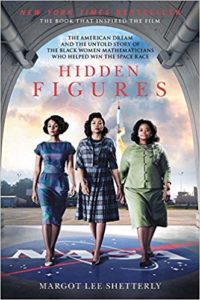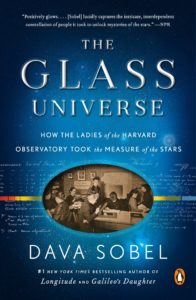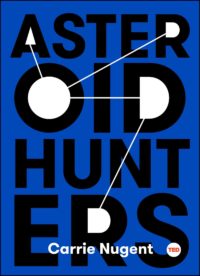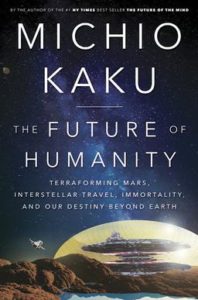Sponsored by Rowman & Littlefield.
This riveting book explores the little-known intimate life of Marie Antoinette and her family in a world filled with secrecy, infidelity, and adultery. Will Bashor unveils the hedonistic atmosphere at Versailles as we learn the secret language of the queen’s fan and explore the hidden passageways and staircases of endless intrigue at the palace. Learn more today.
Happy Friday! Let’s talk about spaaaaaaace.
 Packing for Mars: The Curious Science of Life in the Void by Mary Roach. How do you negotiate daily life without gravity? What happens when you throw up? How do you do hygiene in space? Mary Roach is curious as ever, but this time, about space, and she’s here to ask all the semi-awkward questions you might be too polite to ask astronauts should you ever encounter them. Pick this up if you’ve got some real specific, real practical questions about a potential trip to Mars.
Packing for Mars: The Curious Science of Life in the Void by Mary Roach. How do you negotiate daily life without gravity? What happens when you throw up? How do you do hygiene in space? Mary Roach is curious as ever, but this time, about space, and she’s here to ask all the semi-awkward questions you might be too polite to ask astronauts should you ever encounter them. Pick this up if you’ve got some real specific, real practical questions about a potential trip to Mars.
 Hidden Figures by Margo Lee Shetterly. Sure, people go to space, but what about the MATH. If you’re unfamiliar with the stellar (ha!) movie based on this book, they’re both about the Black women mathematicians who worked at NASA during the Space Race of the 1950s and ’60s (although the book starts in the ’30s) and did things like calculate space shuttle trajectories. Fun fact: Shetterly’s father was a research scientist at NASA and worked with some of the women she writes about here.
Hidden Figures by Margo Lee Shetterly. Sure, people go to space, but what about the MATH. If you’re unfamiliar with the stellar (ha!) movie based on this book, they’re both about the Black women mathematicians who worked at NASA during the Space Race of the 1950s and ’60s (although the book starts in the ’30s) and did things like calculate space shuttle trajectories. Fun fact: Shetterly’s father was a research scientist at NASA and worked with some of the women she writes about here.
 The Glass Universe: How the Ladies of the Harvard Observatory Took the Measure of the Stars by Dava Sobel. It’s the 19th century. Vassar, Wellesley, and other women’s colleges have sprung into being. And their graduates begin “studying the stars captured nightly on glass photographic plates.” This means that Harvard’s half a million plates could be used to discover things like what stars are made of and how you measure the distance between stars.
The Glass Universe: How the Ladies of the Harvard Observatory Took the Measure of the Stars by Dava Sobel. It’s the 19th century. Vassar, Wellesley, and other women’s colleges have sprung into being. And their graduates begin “studying the stars captured nightly on glass photographic plates.” This means that Harvard’s half a million plates could be used to discover things like what stars are made of and how you measure the distance between stars.
 Asteroid Hunters by Carrie Nugent. It’s that classic “what happens if an asteroid is headed towards earth” problem. Or it WAS, but scientists now think we have a solution. And Carrie Nugent is here to walk you through it. And what asteroids are! And how they work. And who the only person in U.S. history is to have been hit by an asteroid (can you IMAGINE?). This is a less-than-200-page quick dive into asteroids, why they’re cool, and how we can stop them from hitting us.
Asteroid Hunters by Carrie Nugent. It’s that classic “what happens if an asteroid is headed towards earth” problem. Or it WAS, but scientists now think we have a solution. And Carrie Nugent is here to walk you through it. And what asteroids are! And how they work. And who the only person in U.S. history is to have been hit by an asteroid (can you IMAGINE?). This is a less-than-200-page quick dive into asteroids, why they’re cool, and how we can stop them from hitting us.
 The Future of Humanity: Terraforming Mars, Interstellar Travel, Immortality and Our Destiny Beyond Earth by Michio Kaku. Ok, so we’ve been to the moon, but what about in the FUTURE. Futurist Kaku “shows us how science fiction is becoming reality: mind-boggling developments in robotics, nanotechnology, and biotechnology could enable us to build habitable cities on Mars; nearby stars might be reached by microscopic spaceships sailing through space on laser beams; and technology might one day allow us to transcend our physical bodies entirely.” Futurism!
The Future of Humanity: Terraforming Mars, Interstellar Travel, Immortality and Our Destiny Beyond Earth by Michio Kaku. Ok, so we’ve been to the moon, but what about in the FUTURE. Futurist Kaku “shows us how science fiction is becoming reality: mind-boggling developments in robotics, nanotechnology, and biotechnology could enable us to build habitable cities on Mars; nearby stars might be reached by microscopic spaceships sailing through space on laser beams; and technology might one day allow us to transcend our physical bodies entirely.” Futurism!
That’s it for this week! You can find me on social media @itsalicetime and co-hosting the nonfiction For Real podcast with Kim here at Book Riot. Until next time, enjoy those facts, fellow nerds.
